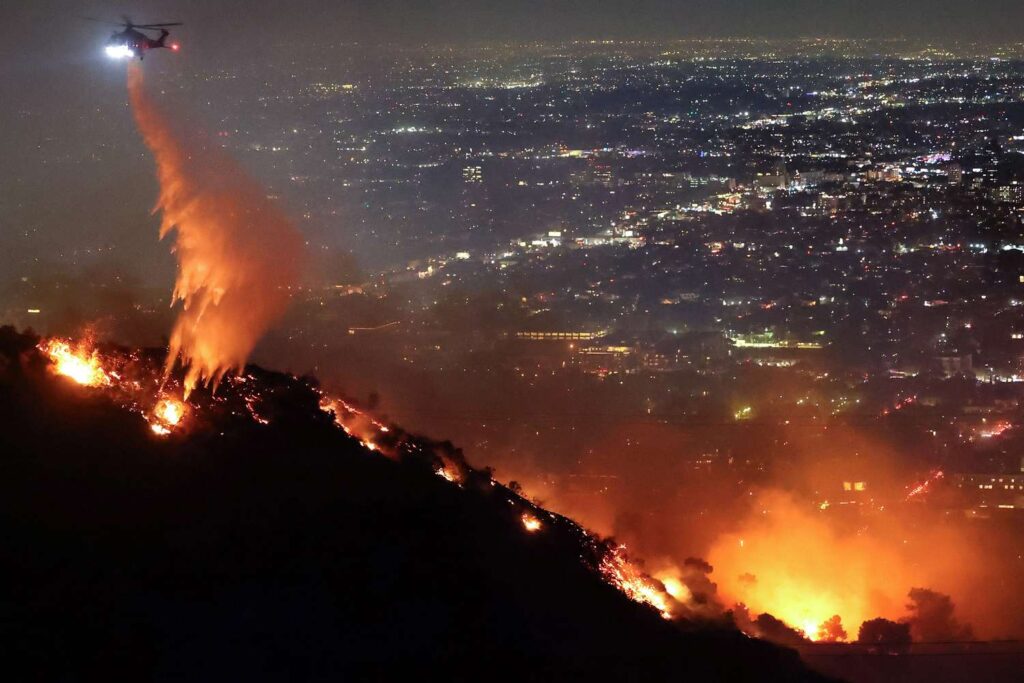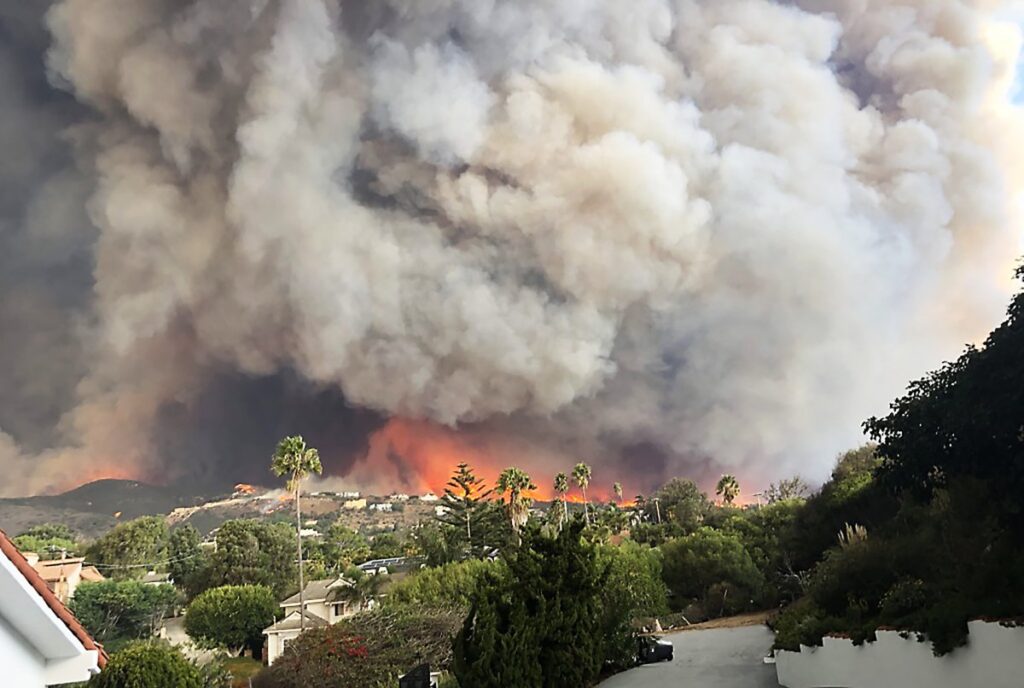The Hollywood Hills Fire are a remarkable landscape with dense vegetation, one of the striking features of Los Angeles, California. Unfortunately, this beauty is usually overshadowed by the vulnerability of the region to wildfires.

The “Sunset Fire” is one such incident that dramatically unfolded as flames started erupting across the Hollywood Hills, threatening homes, natural habitats, and even the iconic Hollywood sign itself. The Hollywood Hills Fire has left a huge mark on the local community and the environment, capturing nationwide attention. Known for its general perspectives and extravagant homes, Hollywood Slopes confronted an unforeseen catastrophe when a fierce blaze broke out, quickly spreading through the notable region. Powered areas of strength for by, dry circumstances, and thick vegetation, the blast has caused broad concern and featured California’s steady danger of rapidly spreading fires.
This article examines a few key realities concerning the fire, including its objective, brave endeavors to tame it, and what it meant for the inhabitants and climate.
What took place?
According to early reports, the Hollywood Hills Fire started on Tuesday, January 8, 2024, in the Pacific Palisades area. Other fires later broke out throughout the city’s north. The ideal storm of high temperatures and strong winds caused the fire to spread quickly over several acres. Although emergency personnel arrived promptly, containment efforts were hampered by the steep terrain and little roadways.

The extent of the harm
Due to the “quick danger to life” presented by the flames spreading throughout the city, the Los Angeles Local Group of Firefighters (LAFD) proclaimed the Hollywood Slopes to be lawfully shut to general society. Subsequently, there is a compulsory departure request for the area. At least five fires are burning in Los Angeles, and five confirmed fatalities have resulted from them.
The LAFD reports that as of 20:15 local time (04:00 GMT), four fires that were 0% contained were spread across approximately 27,000 acres (42 sq. miles; 109 sq. km) in the Palisades, Pasadena, Sylmar, and Hollywood Hills neighborhoods. Over 130,000 individuals have already been forced to leave their houses and the residences of multiple.
Latest updates
As firefighters spread out across Southern California to combat fires that have destroyed thousands of structures, killed at least ten people and placed the region in crisis, a new fire in the West Hills neighborhood of Los Angeles grew fiercely on Thursday evening, enlarging to nearly 1,000 acres in a matter of hours.
Block after block in the picturesque Pacific Palisades were reduced to smoking ruins. All that was left were the silhouettes of houses and their chimneys. Where homes formerly stood on the water in Malibu all that remained above the wreckage were scorched strands of palm.
A synagogue, seven schools, two libraries, boutiques, bars, restaurants, banks, and supermarkets were all lost, along with at least five churches. Local landmarks from the 1920s, the Topanga Ranch Motel and the Will Rogers’ Western Ranch House were also included. The authorities have not yet disclosed the number of structures that burned and the cost of the destruction.

Impacts on the Community
- The region’s schools have been postponed for Wednesday, and officials are asking parents to check with their district or campus for any updates on the current situation.
- Traffic jams have frequently made evacuation attempts more difficult as large numbers of people try to escape on constrained highway space and small roads.
- Locals ran for their lives, causing severe traffic congestion as an instant mandatory evacuation order was issued for portions of the community, including along the famous Hollywood Boulevard
Response of the Community
The people of the Hollywood Hills have banded together and are giving food, shelter, and supplies to evacuees. These days, social media platforms are crucial tools for sharing information, such as updates on evacuation orders and firefighting activities.
Economy and Environment
The devastation of wildlife habitats and plants is a clear reminder of the harm that wildfires cause to the ecosystem. Furthermore, rebuilding and fire suppression costs are anticipated to reach the millions, further taxing municipal resources.
Final Thoughts
The Hollywood Hills Fire highlights the necessity of being ready for wildfires in California’s increasingly arid climate. Residents’ tenacity and sense of community are evident as they strive to rebuild and recover. This catastrophe serves as a somber reminder that preventive actions and alertness are necessary to prevent such calamities.